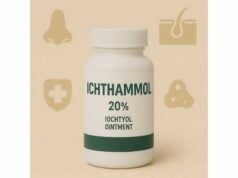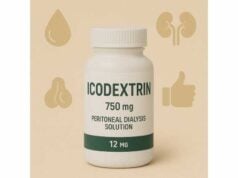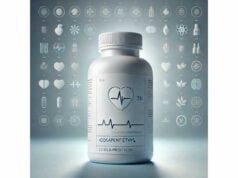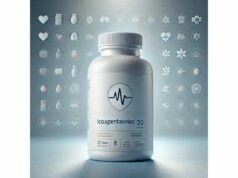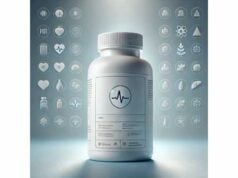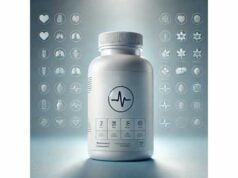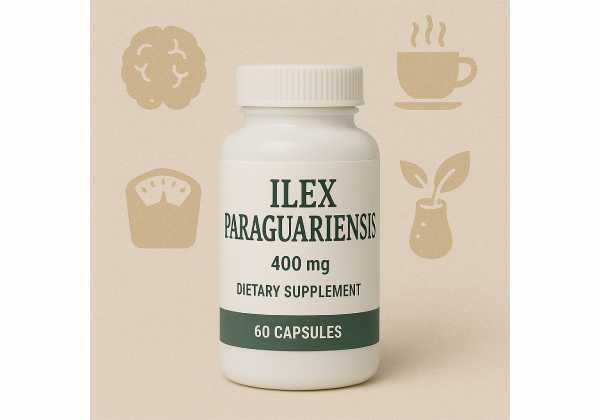
Yerba mate (Ilex paraguariensis) is the backbone of a social ritual across Argentina, Paraguay, Uruguay, and southern Brazil—yet its appeal now extends far beyond the traditional gourd. Brewed as an infusion or used as a standardized extract, yerba mate combines naturally occurring caffeine with chlorogenic acids (CGAs), saponins, and other polyphenols. Together, these compounds can promote alertness, support metabolic health, and provide antioxidant and anti-inflammatory activity. Early clinical research points to modest improvements in body composition and selected cardiometabolic markers, while broader data suggest benefits for exercise performance and appetite regulation. The biggest safety watch-outs are dose-related caffeine effects and the temperature at which you drink it. This guide translates the best available evidence into practical advice—what to expect, how to use mate day to day, and how to avoid common mistakes—so you can decide where it fits in your routine.
Fast Facts
- May improve alertness and attention while supplying polyphenols that support antioxidant and anti-inflammatory defenses.
- Temperature matters: regularly drinking beverages above 65 °C increases esophageal irritation risk.
- Typical intake: 2–4 g loose leaf per 250 mL infusion (1–3 cups/day) or 500–2,250 mg/day of extract, titrated to tolerance.
- Avoid in pregnancy at high caffeine intakes, with upcoming surgery, or when sensitive to stimulants or insomnia.
Table of Contents
- What is Ilex paraguariensis?
- Evidence-backed benefits to expect
- How to use it day to day
- How much mate per day?
- Safety, interactions, and who should avoid
- What the research says overall
What is Ilex paraguariensis?
Ilex paraguariensis is a subtropical holly whose dried leaves and stems are brewed into yerba mate. Traditionally shared from a calabash gourd with a filtered metal straw (bombilla), mate can also be prepared as a teabag or French-press infusion, or cold-brewed as tereré. Beyond custom, it earns a place in nutrition discussions because of its distinct mix of bioactive compounds:
- Methylxanthines: caffeine, theobromine, and theophylline—best known for mental alertness, perceived energy, and reduced fatigue.
- Chlorogenic acids (CGAs): caffeoylquinic acids that influence glucose handling, lipid metabolism, and oxidative stress.
- Saponins (matasaponins): amphipathic compounds that may modulate cholesterol handling, inflammation, and gut responses.
- Micronutrients and minerals: small amounts of potassium, magnesium, and B-vitamins, though contributions to daily intake are modest at typical serving sizes.
How it works (plain-language): the caffeine component antagonizes adenosine receptors in the brain, resulting in increased wakefulness and perceived focus. CGAs and related polyphenols help counter reactive oxygen species and appear to influence enzymes and signaling pathways related to carbohydrate and fat metabolism. Saponins may support healthy cholesterol handling and contribute to a characteristic smooth bitterness that some drinkers come to expect.
What’s special about mate compared with coffee or tea? Coffee contains more caffeine per volume on average, and green tea features catechins (like EGCG). Mate’s polyphenol profile is CGA-heavy and often includes a larger share of di-caffeoylquinic acids, which are being investigated for unique bioavailability and anti-inflammatory activity. In practice, many people find mate’s stimulation “cleaner” than coffee—likely a combination of slightly lower caffeine per cup and the presence of theobromine.
Quality and processing nuances: some traditional smoke-dried products can contain trace polycyclic aromatic hydrocarbons (PAHs). Many modern producers reduce smoke exposure, opt for quick blanching and hot-air drying, or cold-smoke at lower temperatures to limit PAH formation. If you are concerned, look for brands that disclose drying methods and provide contaminant testing.
Bottom line: mate is a culturally rich, plant-forward beverage that offers a moderate caffeine lift plus a diverse polyphenol profile. Its most meaningful advantages likely come from sustained use at sensible doses alongside a healthy pattern of sleep, diet, and movement.
Evidence-backed benefits to expect
Alertness and cognitive performance (short term). The caffeine dose in a cup of mate (often ~70–120 mg per 250 mL infusion, depending on leaf-to-water ratio and steep time) improves reaction time, sustained attention, and perceived energy in the same way coffee does for most people. Theobromine may contribute to a smoother subjective effect, with fewer jitters in some users—though individual responses vary.
Body composition and weight management (weeks to months). In a randomized, double-blind, placebo-controlled trial, daily supplementation with yerba mate extract over 12 weeks produced statistically significant reductions in body fat mass and percent body fat compared with placebo in adults with obesity, with good tolerability. While sample sizes were small, these findings align with plausible mechanisms (increased fat oxidation, appetite effects, and CGA-driven metabolic modulation) and are supported by additional early clinical data suggesting favorable shifts in waist-to-hip ratio and inflammatory markers in select groups.
Cardiometabolic markers. Short, well-controlled interventions using standardized mate extracts providing roughly 500–600 mg/day of CGAs have shown signals—such as reduced fasting glucose from baseline in middle-aged men predisposed to cardiovascular risk, and increased HDL-cholesterol in participants with higher baseline risk. Changes are often small and may require longer interventions, targeted populations (e.g., dyslipidemia, prediabetes), or co-interventions (dietary counseling, activity) to reveal consistent benefit. Observational and small interventional studies also report decreased oxidative stress markers and improved postprandial metabolism after mate compared with control beverages.
Exercise-related outcomes. Mate before moderate exercise can increase fat oxidation relative to carbohydrate during submaximal efforts. Practically, some athletes use 1–2 infusions 30–60 minutes pre-workout to feel more alert without the gastrointestinal load of strong coffee. Whether this meaningfully changes body composition depends more on overall training load and energy balance than on mate alone.
Appetite and satiety. CGAs and saponins may promote modest appetite regulation and lower energy intake at subsequent meals in some individuals, particularly when mate is consumed shortly before or with food. Effects are variable and best viewed as supportive to structured eating habits rather than a standalone strategy.
Neuroprotective and anti-inflammatory signals. Systematic reviews summarize consistent in vitro and in vivo antioxidant and anti-inflammatory activity, with hints of neuroprotection. Human evidence remains preliminary. Translating lab findings into clinical actions requires more rigorous, longer trials.
Manage expectations. Mate is not a magic weight-loss tool or a substitute for lipid-lowering or glucose-lowering medications. Think of it as a useful adjunct: a pleasant caffeinated beverage and potential nudge toward healthier cardiometabolic profiles when paired with better sleep, whole-food meals, and regular movement.
How to use it day to day
Choose your format.
- Loose-leaf infusion (classic): Add 2–4 g of yerba mate to 250 mL hot water. Steep 3–8 minutes. Start shorter to reduce bitterness; extend for a stronger brew. Re-infuse leaves 1–2 times if desired.
- Gourd and bombilla: Fill the gourd ½–¾ full with dry leaves, tilt, and moisten one side with warm water. Insert the bombilla on the sloped side, then add 60–80 °C water to drink. Replenish hot water repeatedly; the “cycle” can deliver caffeine gradually across many small sips.
- French press or teapot: Use 8–12 g per 1 L water for a pot shared across 3–4 small cups. This method creates a bright, less bitter flavor that suits newcomers.
- Cold-brew (tereré): Soak 8–10 g in 500 mL cool water for 6–12 hours in the refrigerator. Expect lower bitterness and a lighter caffeine lift, useful for caffeine-sensitive users.
- Standardized extract (capsule or tablet): Look for labels specifying total CGAs (e.g., 20–40% CGAs) or extract ratios (e.g., 5:1). Extracts provide consistency when you want a defined daily intake without multiple brews.
Temperature matters. For hot preparations, aim for 60–65 °C drinking temperature. Regularly consuming beverages above 65 °C increases esophageal irritation risk. A simple rule: if you can’t comfortably hold the cup or must sip gingerly, it’s too hot.
Flavor and bitterness tips.
- Prefer medium-roast or despalada (with fewer stems) for a greener, more herbaceous cup; barbacuá styles are smokier.
- Shorter steeps, cooler water, or cold-brew all reduce bitterness.
- A slice of lemon peel, a sprig of mint, or a dash of cinnamon can soften edges without adding sugar.
Timing and stacking with routine.
- Morning or early afternoon suits most people; late-day intake can disrupt sleep.
- Pair with a protein-rich breakfast for steadier energy.
- Athletes often use a cup 30–60 minutes before training in place of coffee; experiment with timing based on your sensitivity.
Storage and freshness. Keep sealed in a cool, dry cupboard away from light. Use within 6–12 months of opening for peak aroma. Some connoisseurs “age” mate to mellow flavor, but for nutrition-forward use, fresher is generally better.
Sourcing quality. Favor brands that:
- Disclose harvest region and drying method.
- Offer contaminant testing (PAHs, heavy metals, microbiology) and lot-specific certificates of analysis on request.
- Indicate cut style (e.g., con palo with stems; sin palo mostly leaves), which predicts flavor and strength.
Who benefits most? People replacing ultra-sweetened energy drinks with plain mate, those seeking a steadier caffeine source, and individuals building cardiometabolic habits who appreciate a ritual that nudges them toward hydration and mindful breaks.
How much mate per day?
Start low, build slowly. Caffeine tolerance and GI sensitivity vary widely. Begin with 1 cup/day (about 250 mL brewed with 2–3 g leaves) for a few days, then increase as desired.
Common daily ranges (adults):
- Brews: 1–3 cups/day (about 2–4 g leaves per 250 mL). Many traditional drinkers consume multiple small pours from a gourd; cumulatively this often equals 2–6 g dry leaves per 500–750 mL total liquid across a session.
- Extracts: 500–1,000 mg/day of a standardized mate extract, typically providing 100–400 mg CGAs. In research settings, higher intakes up to 2,250 mg/day extract (≈580 mg CGAs) have been used for 4 weeks under supervision.
- Pre-workout: 1 cup 30–60 minutes prior to exercise. If stacking with coffee or an energy drink, consider half-strength mate to avoid overshooting caffeine tolerance.
Caffeine benchmarks to keep in mind:
- Many adults tolerate up to 400 mg caffeine/day from all sources without safety concerns; single doses up to 200 mg are generally well tolerated. Pregnant individuals are often advised to keep ≤200 mg/day. Translate these into your context by noting that one mate cup frequently provides ~70–120 mg caffeine, depending on steep strength and serving size.
Brewing variables that change strength:
- Leaf-to-water ratio: more leaf per volume raises caffeine and polyphenol delivery.
- Water temperature: hotter water extracts faster; cooler water yields a milder cup.
- Steep time and re-infusion: longer steeps and multiple pours increase cumulative intake.
- Cut style: finer cuts (powdery) release compounds quickly; coarser cuts extract more slowly.
How long to try before judging effects?
- Energy and focus: noticeable within 30–60 minutes of a cup.
- Body composition or metabolic markers: reassess after 4–12 weeks along with diet, steps, and sleep. For extract-based regimens, many practitioners plan 8–12 weeks with a 1–2 week break before re-evaluating.
Special populations (work with a clinician):
- Low body weight or high sensitivity: start with ½ cup or cold-brew to minimize jitteriness.
- Hypertension: monitor blood pressure when adding any caffeinated beverage.
- Diabetes or prediabetes: timing mate with meals may help postprandial comfort; monitor glucose as advised.
What not to do. Avoid chasing stronger effects by pushing water above 65 °C or stacking mate on top of multiple espressos. Don’t use mate to mask inadequate sleep.
Safety, interactions, and who should avoid
Caffeine-related effects. The most common issues—jitters, palpitations, anxiety, heartburn, and insomnia—track with dose. If these appear, reduce strength, switch to cold-brew, or limit use to earlier in the day. People with panic disorder, severe reflux, or arrhythmias may be especially sensitive.
Temperature-related risk. Regularly drinking very hot beverages (>65 °C) increases esophageal irritation and is associated with a higher risk of esophageal cancer, independent of beverage type. Simple mitigations include letting hot mate cool for a few minutes, using a thermometer kettle, or favoring warm or cold preparations.
Possible PAH exposure. Traditional smoke-dried leaves can contain trace PAHs. Risk varies by brand and batch. If concerned, choose air-dried or low-smoke products from companies that publish contaminant testing.
Liver considerations. Yerba mate is generally regarded as safe at customary intakes. Rare, idiosyncratic cases of liver injury have been reported with many botanicals; ensure products are from reputable suppliers and avoid combining multiple new supplements at once.
Medication and supplement interactions:
- Stimulants and decongestants (e.g., pseudoephedrine), MAO inhibitors, thyroid hormones: additive stimulant effects; monitor closely or avoid.
- Antihypertensives: caffeine can transiently raise blood pressure in sensitive individuals; check readings during the first weeks.
- Anticoagulants/antiplatelets: caffeine itself is not a blood thinner, but if you use high-dose fish oil, garlic concentrates, or ginkgo, discuss overall bleeding risk with your clinician before invasive procedures.
- Iron absorption: polyphenols may inhibit non-heme iron absorption when taken with iron-rich meals or supplements. If iron-deficient, take mate between meals and keep iron supplements several hours away.
Who should avoid or limit:
- Pregnant or breastfeeding individuals: keep total caffeine ≤200 mg/day unless your clinician advises otherwise; consider decaf or low-strength cold-brew.
- Children and adolescents: caffeine sensitivity is higher; avoid routine use or keep intake low and occasional.
- People with uncontrolled anxiety, insomnia, arrhythmias, or severe GERD: avoid or use cautiously at very low doses.
- Before procedures: for comfort and hemodynamic stability, many clinicians advise avoiding caffeine the morning of surgery; follow your surgeon’s protocol.
Practical safety checklist:
- Keep daily caffeine from all sources under your individualized limit (many adults: ≤400 mg/day).
- Drink below 65 °C.
- Choose tested, traceable suppliers; store dry leaves in cool, dry conditions.
- Reassess sleep, mood, and GI comfort after 1–2 weeks, adjusting dose or timing if needed.
What the research says overall
Consistency and quality. The human evidence base for mate is growing but heterogeneous. Systematic reviews find consistent antioxidant and anti-inflammatory signals, along with modest benefits across metabolism, weight-related measures, and exercise outcomes. However, most trials are small, often short (4–12 weeks), and vary by extract standardization, beverage strength, and participant characteristics.
Clinical highlights to date.
- Body composition: a 12-week randomized, double-blind trial reported reduced body fat mass and percent body fat versus placebo with daily yerba mate supplementation.
- Cardiometabolic markers: a 4-week crossover trial delivering ~580 mg/day CGAs from a standardized mate extract found a drop in fasting glucose from baseline and an HDL-cholesterol increase in higher-risk participants. Other pilot work in dyslipidemic or diabetic populations suggests improvements in LDL-cholesterol when mate is added to usual diets, though not all trials agree.
- Exercise and substrate use: controlled studies indicate increased fat oxidation during submaximal exercise when mate is consumed before activity, potentially aiding endurance comfort at given intensities.
What evidence does not show. There is no robust proof that yerba mate alone produces large, sustained weight loss or substitutes for guideline-directed therapy for hypertension, diabetes, or dyslipidemia. Benefits, when present, are incremental and most credible when mate complements diets rich in whole plants and an active lifestyle.
Safety consensus. Caffeine guidance for healthy adults commonly centers on single doses up to ~200 mg and habitual intakes up to ~400 mg/day without safety concerns, with lower thresholds for pregnancy. Separately, very hot beverages (>65 °C) are the temperature zone to avoid for esophageal comfort and long-term risk mitigation. These two pillars—caffeine limits and sensible temperature—cover the vast majority of safety questions consumers ask about mate.
Where research is headed. Expect more standardized-extract trials that (1) enroll higher-risk populations (prediabetes, dyslipidemia), (2) last longer than 12 weeks, and (3) measure clinically relevant endpoints (HbA1c, lipid subfractions, inflammatory cytokines) with careful blinding. There is also interest in how di-caffeoylquinic acids differ from coffee’s mono-CGAs in bioavailability and metabolic effects.
Practical takeaway. Mate earns its place as a daily ritual for many because it feels good to drink and fits a mindful routine. From a health standpoint, it’s best viewed as a useful nudge—a moderate caffeine source bundled with polyphenols—rather than a primary therapy. If you like the taste and the way it makes you feel, use it intentionally, at a comfortable temperature, and in doses aligned with your sleep and sensitivity.
References
- Anti-obesity effects of Yerba Mate (Ilex Paraguariensis): a randomized, double-blind, placebo-controlled clinical trial 2015 (RCT)
- A Randomized Crossover Intervention Study on the Effect a Standardized Maté Extract (Ilex paraguariensis A. St.-Hil.) in Men Predisposed to Cardiovascular Risk 2020 (RCT)
- Physiological effects of yerba maté (Ilex paraguariensis): a systematic review 2023 (Systematic Review)
- Scientific Opinion on the safety of caffeine 2015 (Guideline)
- IARC Monographs evaluate drinking coffee, maté, and very hot beverages 2016 (Press Release/Monograph Summary)
Disclaimer
This article is for educational purposes and does not replace personalized medical advice, diagnosis, or treatment. Yerba mate contains caffeine and bioactive compounds that can affect sleep, heart rate, blood pressure, and gastrointestinal comfort. Do not use it to delay or replace prescribed care for cardiovascular, metabolic, or psychiatric conditions. If you are pregnant, breastfeeding, have a history of arrhythmias, anxiety disorders, severe reflux, or plan to undergo surgery, speak with a qualified healthcare professional before using yerba mate or concentrated extracts.
If this guide helped you, please consider sharing it on Facebook, X (formerly Twitter), or your preferred platform, and follow our updates. Your support helps us continue producing careful, evidence-informed content.

